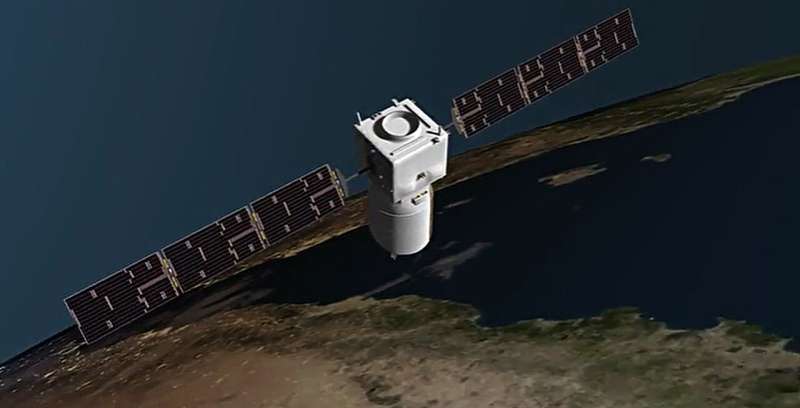Aeolus reentry: The breakdown

After a remarkable life in orbit, Aeolus is out of fuel and out of time—it's returning to Earth this week. Planned and built before any regulations were put in place on "end-of-life" disposal, the Earth explorer was designed to naturally return through our atmosphere.
After months of detailed planning and analysis, ESA together with industrial partners have designed a complex and never-before-performed set of maneuvers to control, as much as possible, Aeolus' fall.
The assisted reentry attempt is built on four main phases, now begun at ESA's mission control:
- Phase I: once Aeolus has fallen naturally to 280 km, the first maneuver is performed—the largest in the mission's five years in orbit. The main objectives are to lower the satellite down to 250 km and to check how the satellite behaves when executing a large maneuver at such low altitudes—more than three times the size of any performed during routine operations.
- Phase II: after three to five days, a series of four maneuvers will lower Aeolus's "perigee altitude"—the point in orbit closest to Earth—down to an altitude of about 150 km.
- Phase III: a final maneuver will lower Aeolus to a perigee altitude of 120 km.
- Phase IV: in the final, shortest phase, Aeolus the spacecraft becomes space debris, completing its final descent in just a few Earth revolutions.
Aeolus is repeatedly turned, or "slewed" by 180° in order to switch from the routine orientation (or "attitude"), in which the satellite's "X-band" antenna points toward Earth and the GPS can function to track the mission—crucial to maintaining knowledge of its position—and the "retrograde" attitude.
This second, "upside down" position is necessary for the thrusters to fire in the opposite direction to Aeolus's flight direction, causing it to lose energy and lower in orbit.
While the ultimate goal is for the spacecraft to burn up as it reenters through the atmosphere, teams need to keep it functioning long enough that they can continue to send up commands and control it on its path.
After the final commands are sent, Aeolus will be "passivated." Passivation is when any energy onboard a spacecraft is removed, for example, its propellant or batteries. Doing this prevents explosions and fragmentation events, that could cause the release of lots of pieces of unwanted space debris.
For Aeolus, already out of fuel, it will simply be turned off. After this point, teams at mission control will continue to monitor the situation until Aeolus's ultimate reentry location is confirmed.
Provided by European Space Agency




















